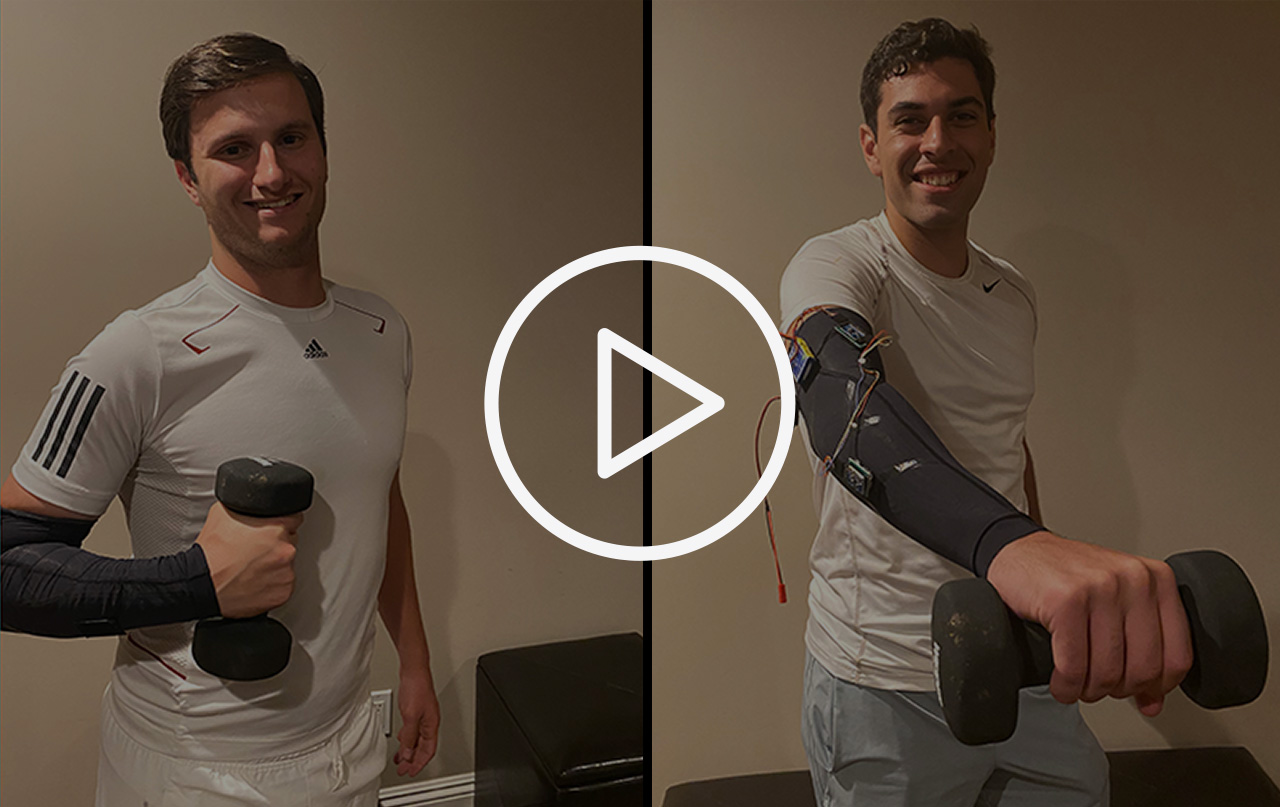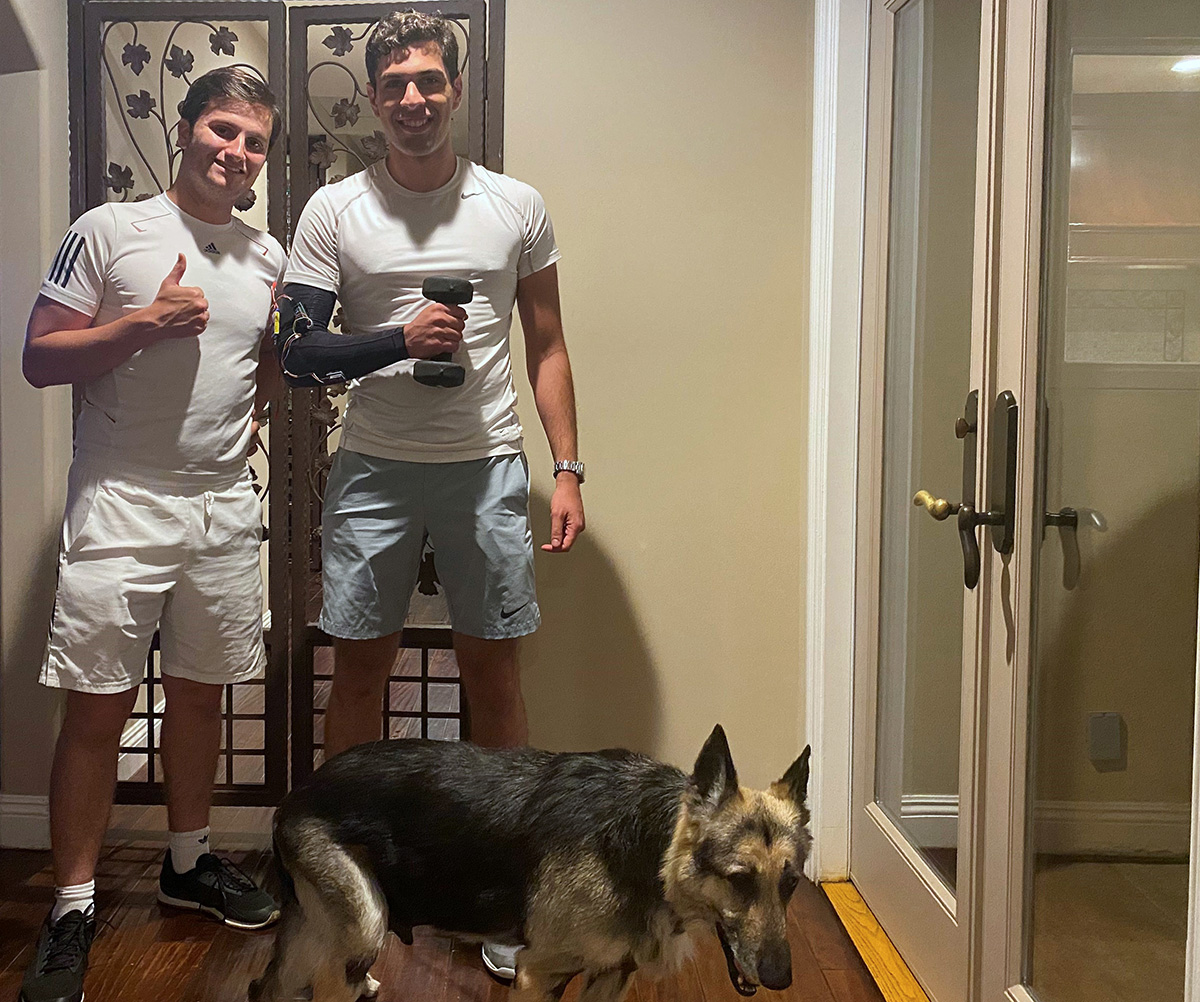Health Technology Showcase
Five Questions and an Elevator Pitch:
Surge Therapy
 In this short video, members of the Surge Therapy team explain the need they set out to address and how their solution works.
In this short video, members of the Surge Therapy team explain the need they set out to address and how their solution works.
1. What’s the need your project seeks to address?
James: When athletes have an injury like an ACL tear that requires physical therapy [PT], they have the best outcomes if they follow their prescribed physical therapy regime. However, most PT programs require a lot of work to be done at home, in addition to live sessions with the therapist. The problem is that patients find doing PT at home tedious and lonely, and so they ‘self discharge,’ which often leads to higher re-injury rates. We’re working on finding a better way to engage injured athletes under 30 years of age in home-based PT in order to increase adherence and improve outcomes.
We chose this patient population to start with because there’s a huge trend of younger populations becoming more athletic, which leads to more injuries. They’re also the most tech-savvy, so would have the easiest time adopting a digital solution.
2. How does your solution work?
Ryan: We have a two-part solution that includes a digital physical therapy platform and a wearable sleeve. The sleeve has integrated sensors that can track the position and speed of the limb and the angles of different joints. Using this combination, therapists can deliver customized home rehab programs to their patients and collect data on their progress and outcomes. Patients are incentivized by participating in Peloton-style virtual group PT sessions that offer friendly competition and the chance to benchmark their progress against others.
James: An additional benefit is that, because the sleeve provides a full three-dimensional picture of the limb, it’s possible for the system to provide the same kind of real-time feedback that an in-person therapist would provide. It lets the patient know if they are doing an exercise incorrectly and then helps adjust their positioning to the correct movement for optimal benefit. So our solution will be able to increase accuracy as well as motivation.
3. What motivated you to continue working on your project, and what activities did you undertake?
James: Every time we present our ideas, the people in the room who seem to like it most are the ones who’ve actually gone through PT before. They come in with a critical, technical eye, which is very helpful. But after we present, they feel an emotional connection to the project because they’re thinking back to a time when they had to go through this process. These people become our biggest advocates, and that has been incredibly motivating and validating for us.
Ryan: I definitely think seeing how the product has changed has also been a driving force. We’ve come a long way since our early concepts. And the more we’ve worked on it, the more we like our solution. It’s made us believers in the Biodesign process, because the more we get feedback and iterate, the better we understand the need and are confident we’re addressing it.
James: This quarter, our focus has been on advancing and testing the prototype. We’ve used the extension funding to hire an expert to help us refine the software, as well as to buy sensors, arm sleeves, wires, breadboards, and all sorts of other equipment. Our near-term goal is to build a more robust prototype that can hold up through more active testing.
 Members of the team model the Surge Therapy sleeve.
Members of the team model the Surge Therapy sleeve.
4. What’s one of the most important things you learned from advancing your project beyond class?
Ryan: Talk to people outside your immediate network and ask for help. It’s definitely not possible to do something with this level of complexity on your own. Because it’s not just about being smart enough to be able to figure something out – it’s about recognizing that there are others who have done what you’re trying to do a hundred times before, and they can help you be much more efficient. Time is a valuable resource.
5. What advice do you have for other students who want to become health technology innovators?
Ryan: Trust the process. When we first walked into the Biodesign for Digital Health class, we thought, ‘We know the need, we don’t need to interview people.’ But the truth is that you can’t really understand the need – or anything else – until you do the hard work of interviewing people and letting them tell you about their experiences. You’re one person, so you’ve experienced one set of problems. When you interview 100 different people about their experiences, which is where we started, you get a much better sense of the problems that are out there. And that’s just the beginning.
James: Also, don’t be afraid to innovate in healthcare. A lot of people say, ‘All the innovation is happening in tech. It’s too hard to innovate in healthcare because the timelines are so long.’ But that’s not necessarily true. There’s a big need for innovation in healthcare, and rapid iteration and progress is possible.
Original team members: Ryan Kalili, James Savoldelli
Course: Biodesign for Digital Health
Biodesign NEXT Funding: Awarded for winter and spring quarters 2019 (with a no-cost extension into 2020)
